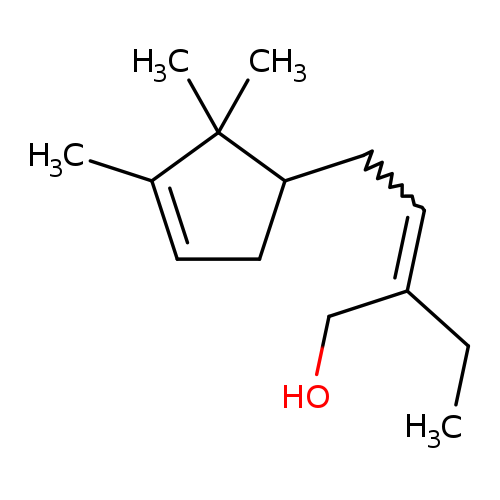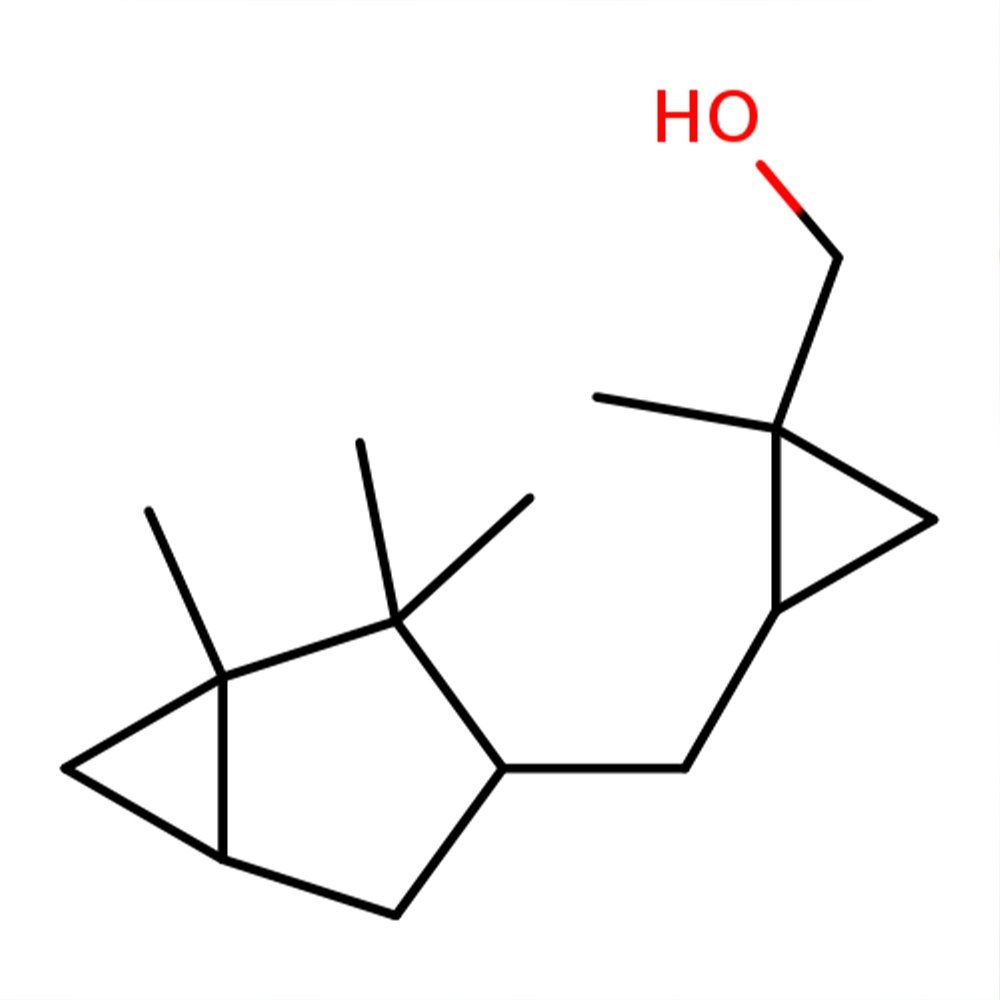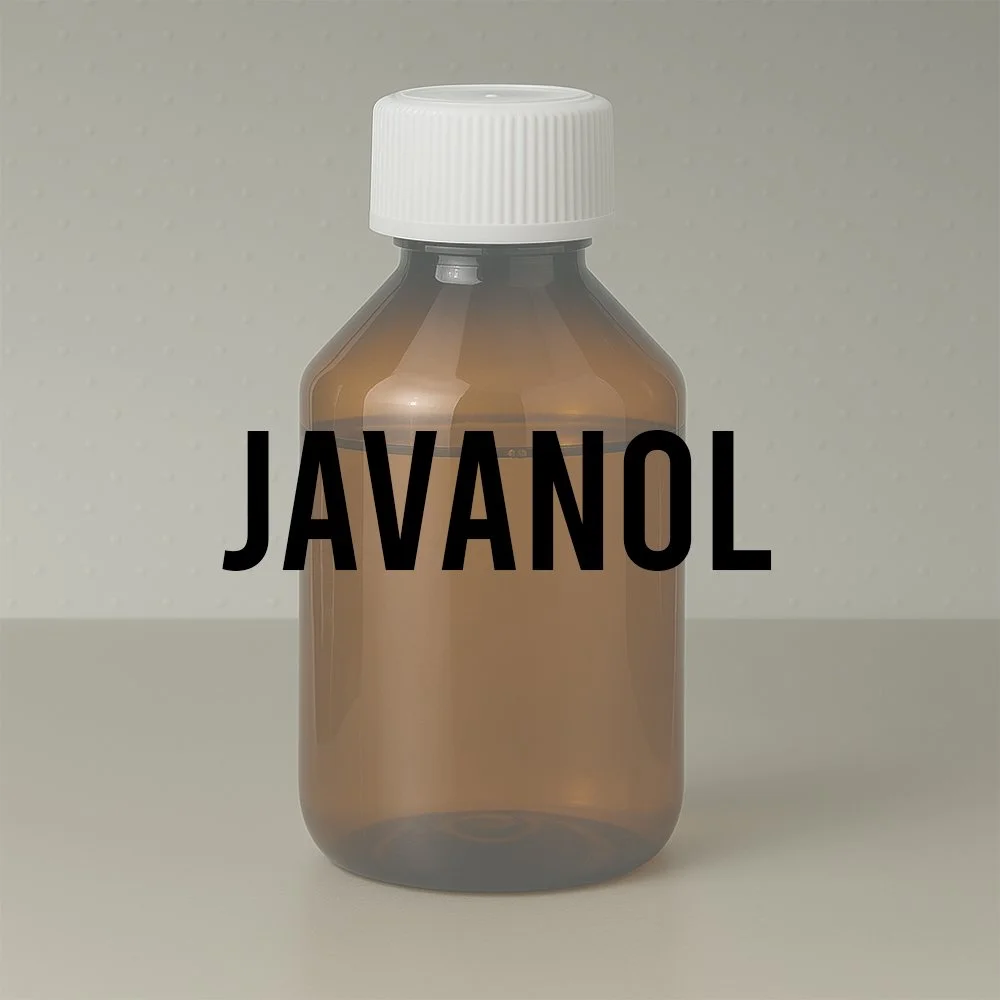Technical Ingredient Overview
🏭 Manufacturer — Symrise
🔎 Chemical Name — 2-Methyl-4-(2,2,3-trimethyl-3-cyclopentenyl)butan-1-ol
🧪 Synonyms — Brahmanol™, tertiary sandalwood alcohol, sandal cyclopentane, Brahmawood
📂 CAS Number — 72089-08-8
⚖️ Molecular Weight — 196.33 g/mol
📝 Odor Type — Woody, Sandalwood
📈 Odor Strength — High intensity, excellent diffusion
👃🏼 Odor Profile — Creamy, warm sandalwood with soft musky base, faint herbal and waxy nuances
⚗️ Uses — Sandalwood accords, modern woody bases, creamy florals, amber-musk structures; usage up to 10% in fine fragrance concentrates
🧴 Appearance — Clear, colorless liquid with refractive index 1.470-1.475
What is Brahmanol?
Brahmanol is a synthetic aliphatic tertiary alcohol specifically engineered to replicate and modernize the olfactory characteristics of natural sandalwood oil while addressing sustainability and regulatory challenges facing the fragrance industry (Symrise, 2022). This molecule belongs to Symrise's portfolio of next-generation sustainable woody materials, incorporating partial bio-based feedstocks into high-performance aromatic compounds.
The compound features a distinctive substituted cyclopentyl backbone that provides exceptional oxidative stability and long-lasting performance in both alcohol-based and oil-based fragrance systems (Surburg & Panten, 2016). Its molecular architecture enhances resistance to degradation while improving compatibility across cosmetic and functional fragrance applications, making it a preferred alternative to endangered natural sandalwood species.
Historical Background
Brahmanol was developed by Symrise as part of their Green Chemistry initiative, responding to increasing regulatory pressure and sustainability concerns surrounding natural sandalwood sourcing (Symrise, 2022). The molecule was specifically designed to address the conservation crisis affecting Santalum album (Indian sandalwood) and Santalum spicatum (Australian sandalwood), both species facing significant harvesting restrictions.
First commercialized in the early 2000s, Brahmanol represented a breakthrough in synthetic sandalwood chemistry, offering 69.2% renewable carbon content while maintaining the creamy, woody character essential to modern perfumery (Symrise, 2022). The development utilized advanced synthetic pathways to create a molecule that could deliver authentic sandalwood facets without the environmental impact of natural harvesting.
The compound's introduction coincided with IFRA's increasing focus on sustainable sourcing practices and marked a significant advancement in the industry's ability to create ethical woody accords. Its success has influenced subsequent development of other sustainable woody molecules across major fragrance houses.
Olfactory Profile
Scent Family: Woody, Sandalwood subfamily
Main Descriptors: Creamy, warm sandalwood character with soft musky undertones, subtle herbal and waxy nuances (Symrise, 2022)
Intensity: High-impact molecule with excellent diffusion and projection
Tenacity: Long-lasting performance with excellent substantivity on skin and textiles
Volatility: Base note character with moderate evaporation rate, suitable for structural foundation work
Fixative Role: Acts as both olfactory contributor and mild fixative, enhancing overall composition longevity
The molecule delivers authentic sandalwood facets without the potential off-notes sometimes associated with other synthetic sandalwood alternatives. Its rounded diffusion makes it particularly valuable in fine fragrance applications where smooth woody textures are desired (Scentspiracy, 2024).
Applications in Fine Fragrance
Brahmanol serves multiple roles in contemporary perfumery, functioning as both a primary woody accent and a structural component in complex accords. Its primary applications include:
Sandalwood Accords: Forms the creamy woody core in modern sandalwood reconstructions, providing authentic character without natural sourcing concerns.
Creamy Floral Structures: Enhances white floral compositions including tuberose, jasmine, and ylang-ylang by adding woody depth and creamy textures.
Modern Woody Bases: Contributes to contemporary woody accords alongside ambers, musks, and other synthetic woods.
Fougère and Chypre Modernization: Provides contemporary woody facets in classic fragrance families, offering smoother alternatives to traditional woody materials.
Typical usage ranges from 0.5% to 10% depending on composition weight and desired olfactory impact. The molecule demonstrates excellent blending characteristics with musks, florals, lactones, and amber compounds (Symrise, 2022).
Performance in Formula
Brahmanol exhibits superior stability and compatibility across various fragrance media:
Diffusion Characteristics: Excellent bloom with sustained release over time
Blending Behavior: Smooth integration with both natural and synthetic components
Stability Profile: Resistant to oxidation and pH variations within normal cosmetic ranges
Fixative Strength: Moderate fixative properties enhance overall composition longevity
Compatibility: Works synergistically with musks, ambers, and floral materials
The molecule's log P value of 4.73 indicates optimal lipophilicity for skin substantivity while maintaining appropriate volatility for fragrance applications (Scentspiracy, 2024). Its boiling point of approximately 273°C ensures thermal stability in various application methods.
Industrial & Technical Uses
Beyond fine fragrance applications, Brahmanol demonstrates versatility across multiple industrial sectors:
Fabric Care: Stable performance in fabric softeners and laundry detergents under moderate surfactant conditions.
Personal Care: Excellent compatibility in soaps, shampoos, and body care products with good consumer acceptance.
Air Care: Heat-stable performance in candles and air fresheners with sustained diffusion characteristics.
Alcoholic Products: Superior bloom and tenacity in alcohol-based sprays and colognes.
Technical specifications include a density of 0.9010-0.9070 g/cm³ and storage stability of 24 months under proper conditions (Associate Allied Chemicals, 2024).
Regulatory & Safety Overview
IFRA Status: Not restricted under IFRA 51st Amendment - unrestricted use in all fragrance categories (IFRA, 2023)
GHS Classification: H411 - Toxic to aquatic life with long-lasting effects (ECHA, 2024)
EU Cosmetics Regulation: Compliant with EU cosmetic regulations, not listed among 26 declarable allergens
Toxicology: No evidence of skin sensitization at standard usage levels; not classified for photoallergenicity or mutagenicity
FEMA Status: Not assigned for food applications
Recommended Usage Limits: Up to 10% in fragrance concentrates, following standard GMP practices and SDS guidelines. Environmental considerations require compliance with local effluent regulations due to aquatic toxicity classification.
Related Materials
For comprehensive understanding of woody fragrance construction, explore related Scentspiracy materials:
Cedramber - Complementary woody-amber base note
Amberwood F / Boisambrene Forte - Synergistic amber-woody combination
Sources
Symrise (2022). Brahmanol – Product Sheet & Regulatory Data
ECHA (2024). Substance Information for CAS 72089-08-8
IFRA (2023). Standards 51st Amendment
Surburg, H. & Panten, J. (2016). Common Fragrance and Flavor Materials
Scentspiracy Archives – Synthetic Woody Compounds










